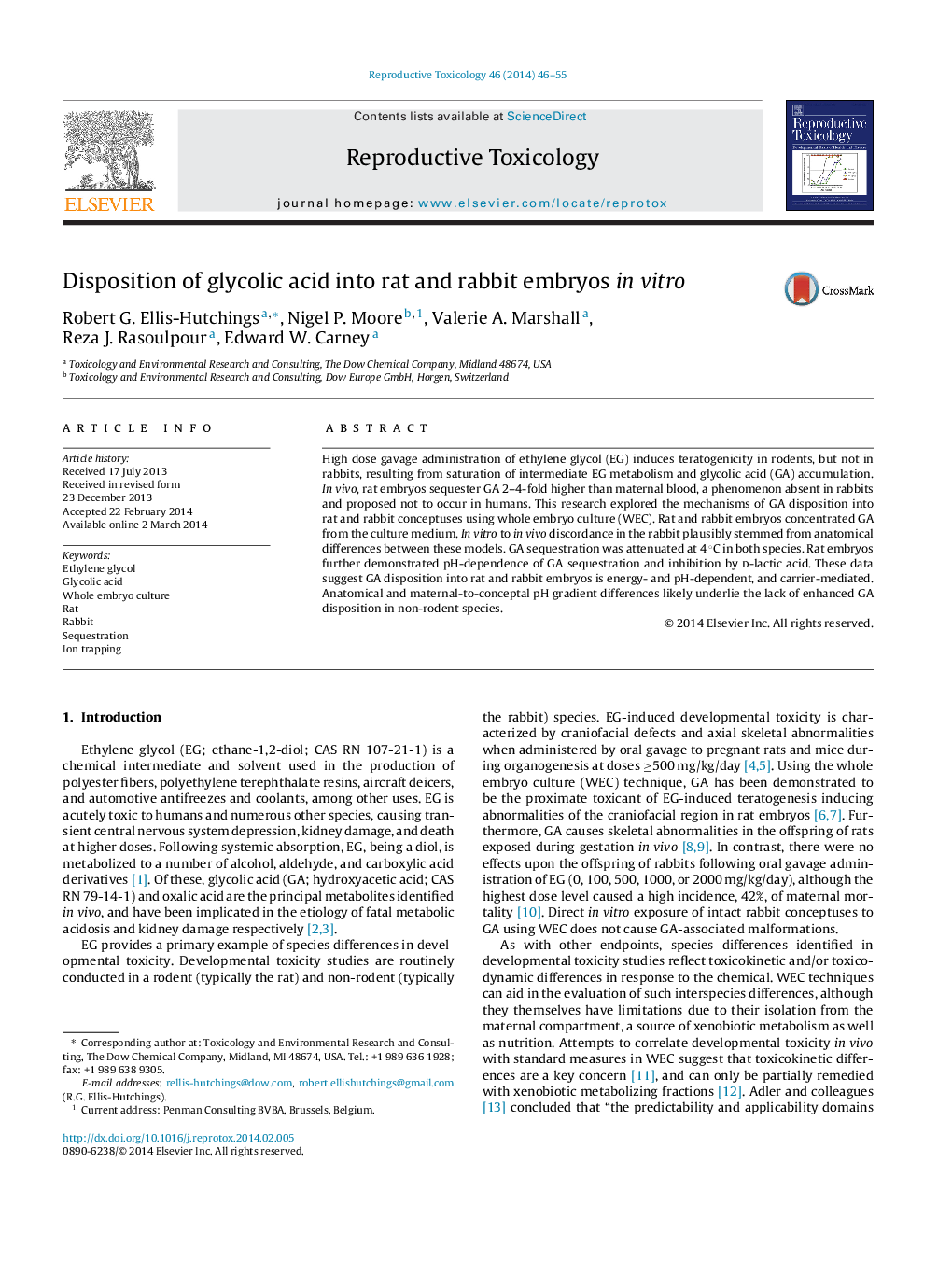| Article ID | Journal | Published Year | Pages | File Type |
|---|---|---|---|---|
| 5858883 | Reproductive Toxicology | 2014 | 10 Pages |
â¢Rat and rabbit embryos concentrated GA from the culture medium.â¢In vitro to in vivo discordance was observed in the rabbit.â¢Data supports energy- and pH-dependent, and carrier-mediated embryo GA disposition.â¢Differences in anatomy and maternal-to-conceptal pH gradient underlie lack of enhanced GA disposition in non-rodent species.
High dose gavage administration of ethylene glycol (EG) induces teratogenicity in rodents, but not in rabbits, resulting from saturation of intermediate EG metabolism and glycolic acid (GA) accumulation. In vivo, rat embryos sequester GA 2-4-fold higher than maternal blood, a phenomenon absent in rabbits and proposed not to occur in humans. This research explored the mechanisms of GA disposition into rat and rabbit conceptuses using whole embryo culture (WEC). Rat and rabbit embryos concentrated GA from the culture medium. In vitro to in vivo discordance in the rabbit plausibly stemmed from anatomical differences between these models. GA sequestration was attenuated at 4 °C in both species. Rat embryos further demonstrated pH-dependence of GA sequestration and inhibition by d-lactic acid. These data suggest GA disposition into rat and rabbit embryos is energy- and pH-dependent, and carrier-mediated. Anatomical and maternal-to-conceptal pH gradient differences likely underlie the lack of enhanced GA disposition in non-rodent species.
